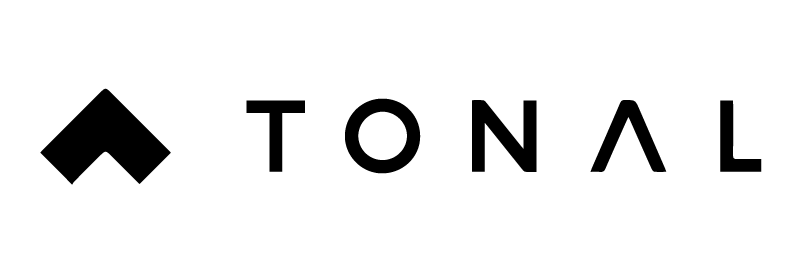According to estimates by Mckinsey in 2021, the global wellness market is valued at more than $1.5 trillion USD, with an annual growth of 5-10%. This includes not just fitness but also health, appearance, nutrition and sleep–in the examples of fitness companies later, you will see them integrating some of these aspects into their business. The massive size of the growing market means that if you capture just 0.01% of the market share, you could still be a $1.5 million company. A world of opportunities seems to await those who try to seize it, but there had also been very aggressive competition. In recent years, 3 brands received tremendous funding and spotlight among others producing home gym hardware: Peloton, Tonal and Mirror. They had grown tremendously since the height of the pandemic and there were many who bet they would continue to rise–but we now see them struggling to meet expectations as revenues start to slow. Would they be the norms of the future? I would like to take the opportunity to explore and compare these 3 companies.
Exercises such as weight training is as old as recorded human history itself–fascination with the boundaries of human's physical abilities can be seen in numerous ancient writings. Prehistoric tribes would lift big rocks and Ancient Greece saw the invention of the Halteres, the predecessor of the modern dumbbell. It was only in the 1960s that you see the gradual introduction of fitness machines into strength training gyms–which are still rare at that time. In other words, in the wide span of human history, exercising and weight training has always been there and always will be; but the standard form and way of exercising has been evolving rapidly. Just like how meals has expanded from home cooking to restaurants and bistros to having fast food restaurants and now widespread home delivery service, the norms and infrastructure has been quickly changing in the fitness arena as well.
Many changes rocked consumer's exercise routines during the pandemic, at the height in 2020, fitness-tech apps raised a record-breaking $2 billion from investors. According to a 2021 Mckinsey survey, monthly consumer spending on connected fitness hardware–like that of Peloton and Tonal–increased by 5% and spending for paid apps rose about 10%. Also, slightly more than 10% of the US population have set up home gyms or accessed fitness resources online during the pandemic–among them 70% showed intent to maintain or increase their online fitness use even after the pandemic is over. On the flip side, there are also voices of discontent about their pandemic-era workouts as compared to before: half regarded their home workouts to be not intense enough and 95% who used to go to the gym reported missing at least 1 element of working out at a gym. These helps us ponder the positioning of gyms and the gaps home gyms and connected fitness hardware can fill.
I first read about this model in Japanese design firm Takram's co-founder Kinya Tagawa's book 'The innovation skillset'. It highlighted the combination of subscription and a well-designed hardware as a forerunning business model. SaaS refers to subscription as a service and the 'Box' refers to the hardware product. All 3 fitness brands I am exploring adopts this profitable model. In fact, most of these hardware sells for such a high price that the profit from the most of the hardware itself is enough to cover the customer acquisition cost. Add on the continuous and stable revenue from the subscription and you get an incredibly fast-growing enterprise.
Each of the brands have their unique strengths but a general advantage of having digital systems is the ability to track progress that could motivate users.

Peloton was founded in 2012. They sold their first model on kickstarter in 2013 and has since gone public with a revenue of $4.02 billion USD in 2021 and more than 8000 employees. The Peloton Bikes are basically internet-connected stationary bicycles with a touchscreen that streams exercise classes to the rider. The ability to compete live with other participants anywhere else in the world 24/7 sets it apart from working out in gyms and studios.
Influence from the pandemic drove sales for the home-based products but as re-openings began, the company stopped growing as much as they had expected and in February 2022, 2,800 employees were laid off in an effort to save $800 million annually.

Tonal is founded in 2018 and has since raised over $450 million and is backed by leading growth and venture capital investors. Their main product is a internet-connected cable resistance trainer with adaptive weights. They are paired with displays and cameras that spots errors in a user's form and analyses each user's fitness level to go on and recommend workouts tailored for each person with a library of fitness video content.
It solves the hassle of having need many different weight training equipment and having to constantly rack and unrack metal weights.In July 2022, Tonal laid off 35% of its workforce in a midst to optimize their cost structures.

Mirror is a smart home gym mirror display that provides live classes for exercises ranging from yoga to boxing. It started as a start-up in 2018 that was acquired by athleisure company Lululemon for $500 million in 2020. It costs the least out of the 3 brands and it can fit easily into different home settings–either wall mounted or standing. It seems just like any other mirror when it is not in use. There is a limitation to what you can do with just weights at home so Mirror seems more like for cardio than strength training as compared to Tonal.
In December 2021, according to Lululemon's quarterly earnings report, Mirror sales make up less than 3% of their total revenue and from there Lululemon slashed Mirror's revenue outlook by half–from the previous projection of between $250 million and $275 million to between $125 million and $130 million. Mirror sales and its recurring subscriptions had generated $170 million in 2020.
Despite all the comparatively bleak outlooks on these fitness companies, it might not be a bad thing as it transitions from hyper-growth into sustainable healthy growth as Tonal's CEO shared about their recent layoffs:
“Tonal is prioritizing becoming a self-sustaining business with an emphasis on profitability. While sales have continued to grow at an unprecedented rate, so have the costs of our business, particularly in light of the macroeconomic climate and global supply chain challenges.” Beyond selling for home-use, all 3 brands started selling BtoB, to places like hotels–an apt move for the post pandemic world. How it will play out in the long term is something to keep a look out for.